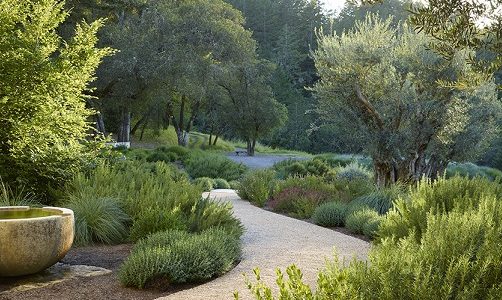Paths, allees, and walks dictate the way around a garden, leading you and your guests from one garden room to another, through gates, under archways, and long vistas. It is a means by which you can choreograph movement. A well-thought-out walkway will lend “bones” or structure to the garden as a whole.
In the following sections, we look at some common pathway types and styles.
1. Stepping stone paths
Uniform, closely spaced stepping stones on a bed of gravel or mortar make for a path that is easy to navigate. The stones’ neutral color is a nice contrast to the vivid hues of the ground cover surrounding them.
Not all stepping stones in a path have to be the same. Two runs of dark rectangular stone can transition to light-colored round ones just before the path enters the lawn. Stepping stones offer flexibility to your garden design. It can be curved, or straight and can easily be moved to meander around a new flower bed, a water feature, or a seating area.
To make stepping stones visually flow, place the stones so that they relate to their neighbors. Lay a straight edge of one stone against a straight edge of another, a concave edge against a convex edge. When set in a lawn, stepping stones should be flush with the soil so they do not interfere with mowing. Surrounded by a lush ground cover carpet, large flagstones should be spaced to accommodate the human gait.

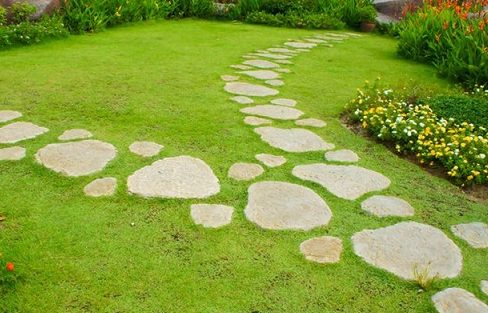

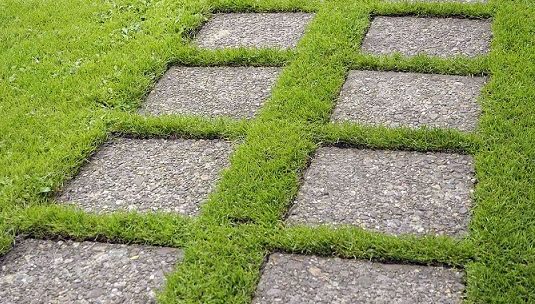
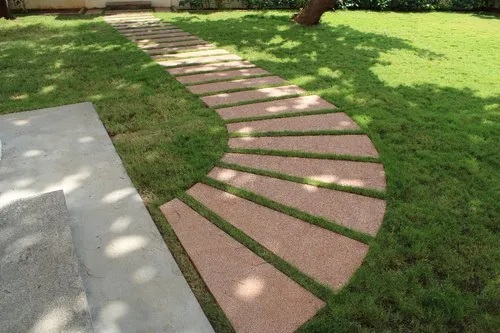
2. Gravel paths
Gravel makes for a casual path that is inexpensive, attractive, and with excellent drainage properties. The permeable surface allows rainwater to percolate into the soil rather than puddle on the surface or run off into adjacent areas.
With the crunch underfoot and the sweet smell of lavender, a gravel path is more than just a pretty picture. Formal and clean, a wide path of decomposed granite looks right at home with clipped hedges and various stone features. It can also be used in smaller gardens on meandering routes.
But without some edging such as low cobbles or metal, the path would soon begin deteriorating along its edges. Edging also serves as a design element. A gravel path edged with brick has a more formal look than one edged with rough stones. For a modern look, consider metal edging.
Place a solid stone apron and a coarse doormat at the doorstep so gravel doesn’t travel on people’s shoes into the house, where it might scratch floors. Gravels smaller than 1/2 inch in diameter are more likely to be trapped in shoe treads.

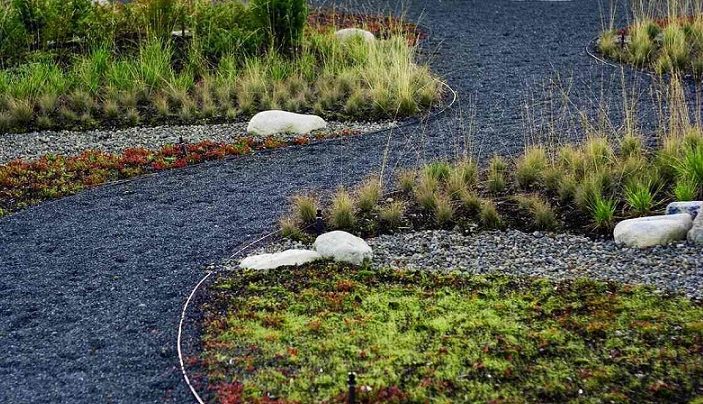

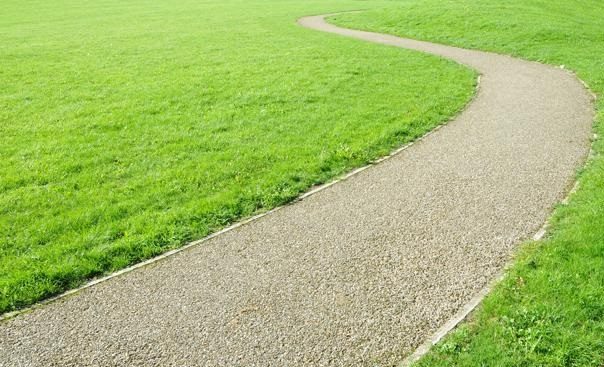

3. Flagstone paths
Flagstones make a graceful transition between a gravel driveway and an entryway. Even a long straight path is more interesting when paved with flagstones, whose random shapes, textured surface, and plant-filled joints and surrounding low-growing flowers nicely soften the scene.
Flagstones generally look best when they are laid with their longest dimension running across the path.
For a formal-looking path that will not need weeding, lay flagstone on a concrete base and apply mortar between the joints. With this kind of foundation, you can use thinner stones, down to 1 inch thick, which weigh and cost less. Make gaps between stones about 1 inch wide and relatively uniform for the best look.
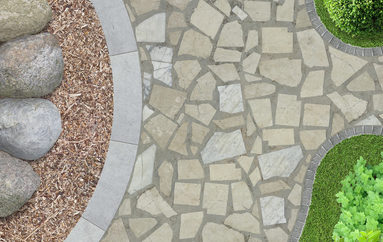



4. Fieldstone path
A fieldstone path made of small local stones can wind through a shady moss garden decorated with ivy, ferns, and spring flowering bulbs.
Fieldstones, any rock that was not quarried or collected from a riverbed or beach, have a more rustic look than flagstones, with rougher surfaces and more variation in size, shape, and color.
On a gentle slope, large stones can be used for steps, while smaller ones fill in behind. Rounded stones make good edging material

5. Cut stone path
Uniformly shaped cut stones such as large bluestone pavers can be set closely together, made as level as a concrete walkway and smoothly mortared in for a stable and comfortable walking surface. Apart from bluestone, there are more color variations and textures to your liking.

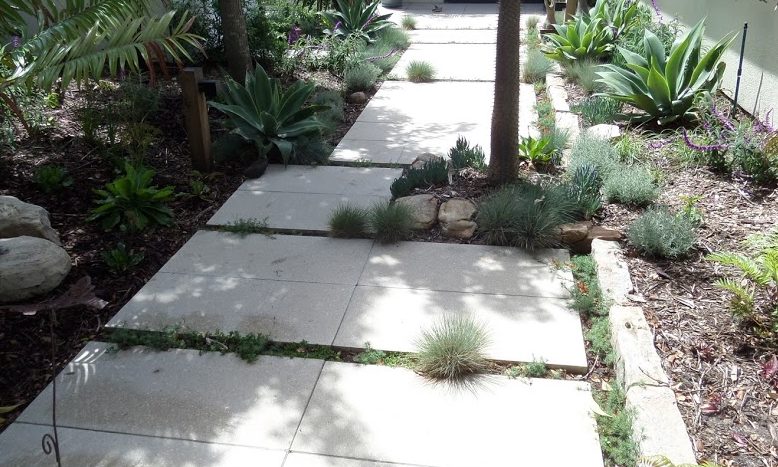
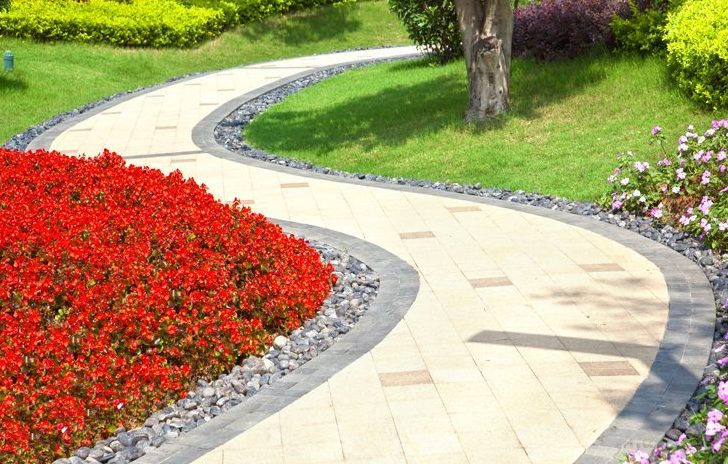
6. Cobblestone Paths
A cobblestone path brings a feeling of antiquity to a garden and makes a pleasingly textured walking surface.
Stone and concrete cobbles are available in a wide variety of sizes, colors, and shapes. Large and small pieces can be mortared into place to form a path and simple steps. To form a stable path, cobble should be contained within an edging and set closely together with sand-filled crevices.
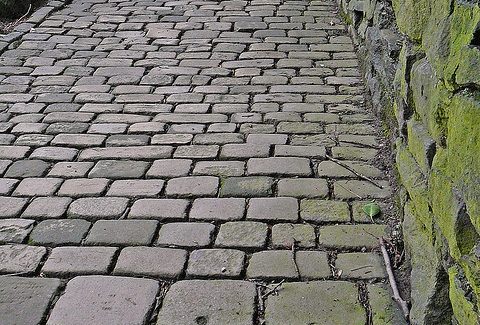
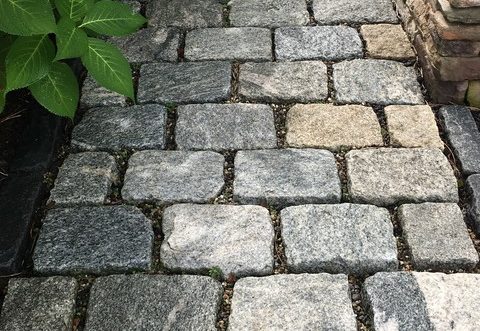
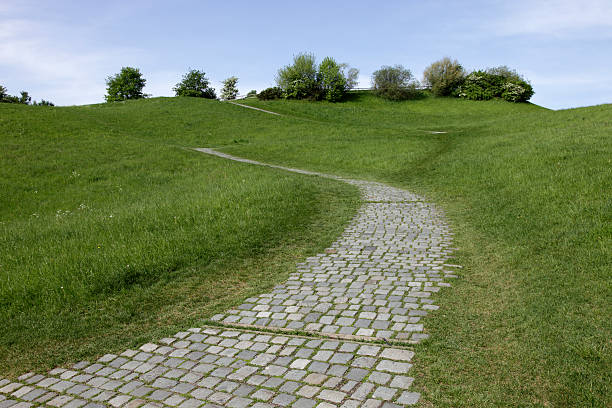
7. Mixed Material Paths
Paths don’t have to be made of a single material. Below are some examples of mixed material paths;
- An edged gravel path can step up to concrete pavers set in blue river stones.
- A whimsical combination of brick and round gravel offers a pleasing contrast in color and texture.
- Rough-cut stepping stones (flagstones) can march down the middle of a gravel path.
- Cut stone can be interspersed with brick edging.
For a casual path, choose a variety of materials that are flat on one side. Or achieve a more conventional look with materials of the same form but different colors, such as pavers in alternating shades of gray or the same color but different shapes
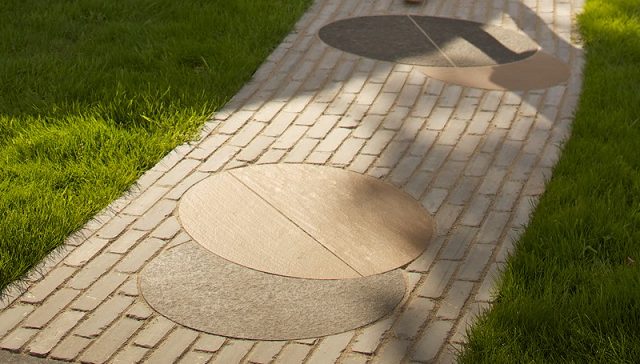

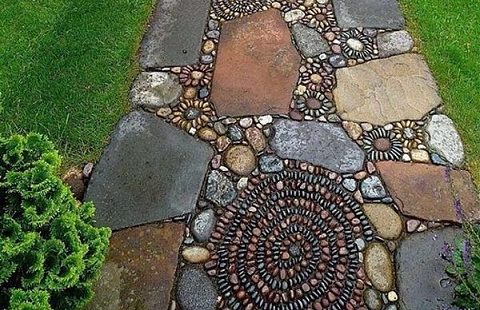
8. Pebble Paths
Pebbles or river rocks are too smooth and round to make suitable paving if left free to roll around. But when set in concrete with their flattest side up, they create a perfectly navigable path with an interesting texture.
Another variation on the pebble path theme: is concrete sidewalks with exposed aggregate that is embedded into the concrete before it dries.


Garden Path Styles
We can also classify paths based on the Garden style they serve.
1. Oriental Garden Paths
In oriental Chinese or Japanese gardens, the outdoor spaces are usually divided into enclosures (garden rooms) intended to be viewed independently. Stepping stone pathways and gravel walkways are sheltered and private.
There is a focus on natural elements; water, and stone are symbolic features in these gardens. Low maintenance materials are a common feature, with stone, granite, or even concrete slabs forming both path and patio surfaces.
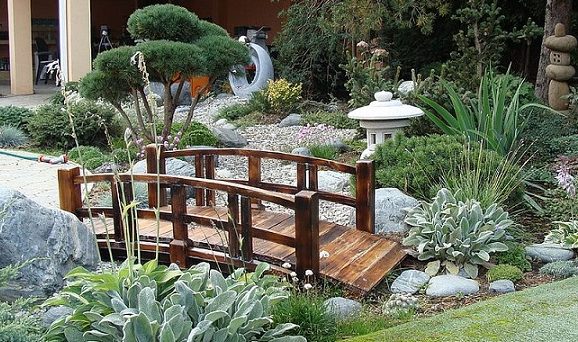

2. English cottage garden Paths
In a cottage garden, there is a profusion of flowers, vegetables, herbs, and even fruit trees. There are no lawns or empty spaces. The available ground is cultivated. Paths and steps have a strictly functional purpose.
To a large extent, it is pathways that give shape to a cottage-style garden. There is invariably a main path from the garden gate to the front door, as well as secondary paths to provide access to the many plants and benches. While these usually curve slightly, creating an informal impression, the route is reasonably direct.
Local materials such as stone, and gravel will all fit in the picture. Brick, wood, and concrete slabs may also be used, but they should be artificially weathered to age the surface.

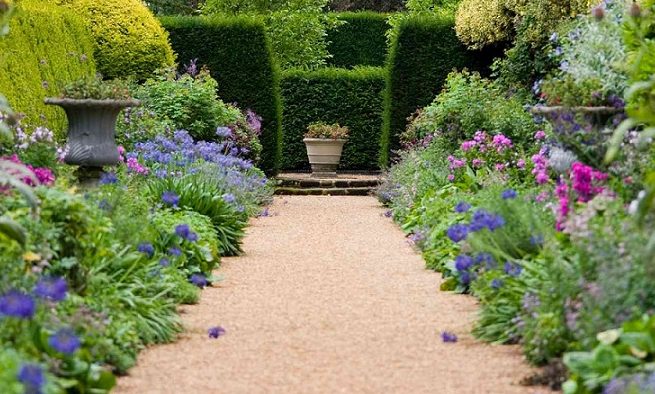
3. Victorian Garden Paths
Victorian gardens are characterized by strong and varied colors and a busy layout. Arbors, gazebos, arches, tunnels, and elaborate plant supports are found on patios and within the garden.
Victorian gardens favor rose walks and pathways which lead to arbors and retreats. Herb gardens, divided by paths leading to a central sundial are another common feature as are fussy carpet beds planted to imitate mosaic. Strong color contrasts are popular for carpet bedding, which involves planting low-growing flowers, ground covers, and plants with colored foliage to create formal patterns.
Brick, grass, and gravel paths are suitable for this style.


4. English Country Garden Paths
Just as the interiors embody a timeless feeling of gracious living in English country homes, so do the gardens of this genre. Paved surfaces have a patina of natural weathering that allows moss and lichen to take hold.
Paths and steps are charmingly overgrown, with plants breaking all straight lines as they tumble from borders and crevices, often growing between stones and bricks. Gravel, grass, stone (including reconstituted stone), and old bricks are all suitable pathway materials.
Encourage moss to grow, and plant flowers that will seed themselves between the bricks, stones, concrete, and other materials used for paving and steps.
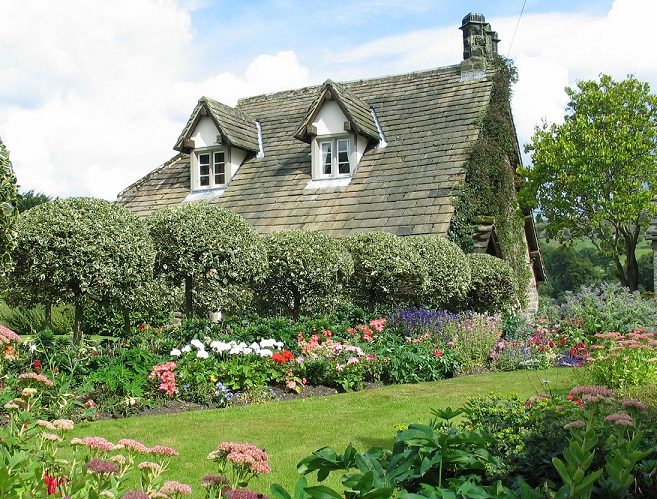

5. Mediterranean Garden Paths
Suitable where the winters are mild, this style evokes images of the Mediterranean region. Walled courtyards and patio gardens, provide privacy and shade and offer an opportunity to introduce varied themes.
There is a lot of hardscaping in the Mediterranean garden and this is where container planting comes into their own. Just about any walkway paving will suit the style, from concrete to textured tiles, but terracotta tiles and clay bricks are particularly appropriate. A popular option for paths and steps is to set cobblestones or smooth pebbles into concrete, creating patterns and motifs with varying shades of brown, gray, and white.
